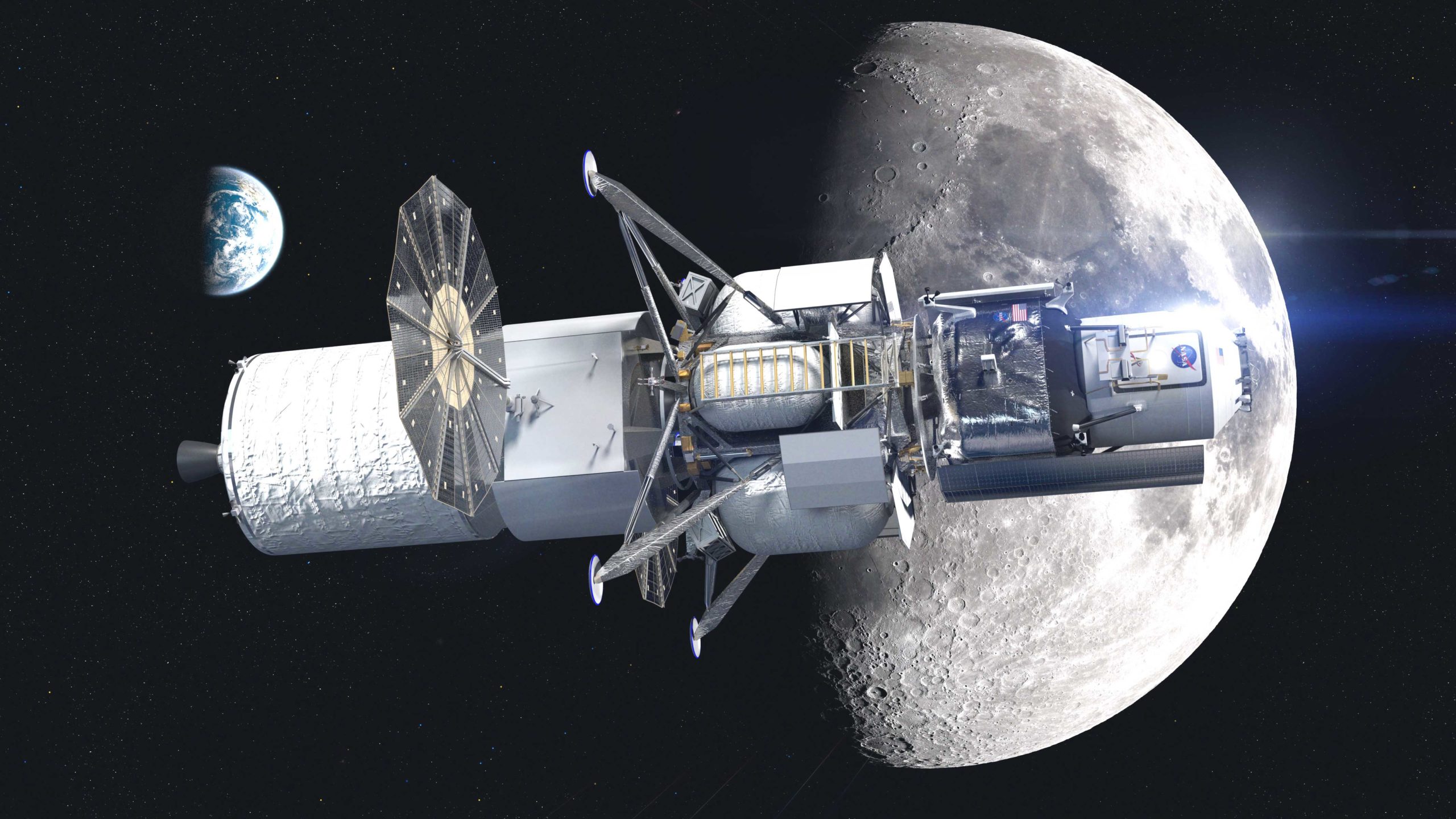
As NASA works to formally “down-select” its Human Landing System (HLS) industrial teams from three to two later this spring, one of those teams—the “National Team”, led by Jeff Bezos’ Blue Origin and including Northrop Grumman Corp., Lockheed Martin Corp. and Draper Laboratory—presented the current state of its hardware and software, as well as an exciting vision for future exploration of the Moon on Thursday.
In a Zoom webinar, the National Team unveiled its three-element Integrated Lander Vehicle (ILV) to land the next man and the first woman on the lunar surface by 2024 and featured contributions from former Apollo Lunar Module Pilots (LMPs) Charlie Duke and Fred Haise, as well as former shuttle and International Space Station (ISS) astronaut Sandy Magnus.
The Blue Origin National Team was formally unveiled in October 2019. Under its terms, Jeff Bezos’ Kent, Wash.-headquartered organization serves as prime contractor, leading program management, systems engineering, safety and mission assurance, together with mission engineering and operations, as well as developing the Descent Element for the HLS.
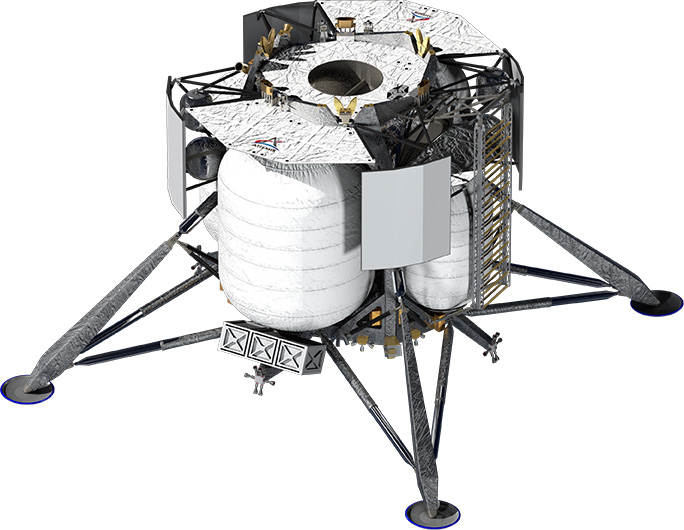
Meanwhile, Lockheed Martin is responsible for the reusable Ascent Element and leads crewed flight operations and training, whilst Northrop Grumman Corp. is fabricating the Transfer Element to deliver the HLS from Near-Rectilinear Halo Orbit (NRHO) into low lunar orbit and Draper is handling the descent guidance systems and provision of the spacecraft’s flight avionics.
Last April, the National Team was selected by NASA, alongside Dynetics and SpaceX, to design and develop HLS concepts for forthcoming Artemis missions, which are currently geared to land astronauts on the Moon by 2024. The project ten-month contracts were awarded under the language of Appendix H of the public-private Next Space Technologies for Exploration Partnerships (NextSTEP)-2. If their lofty goal is achieved—and with a new White House administration due to take office in a few days’ time, it remains a significant if—the milestone will mark the return of humans to the surface of our closest celestial neighbor for the first time since Apollo 17 in December 1972.
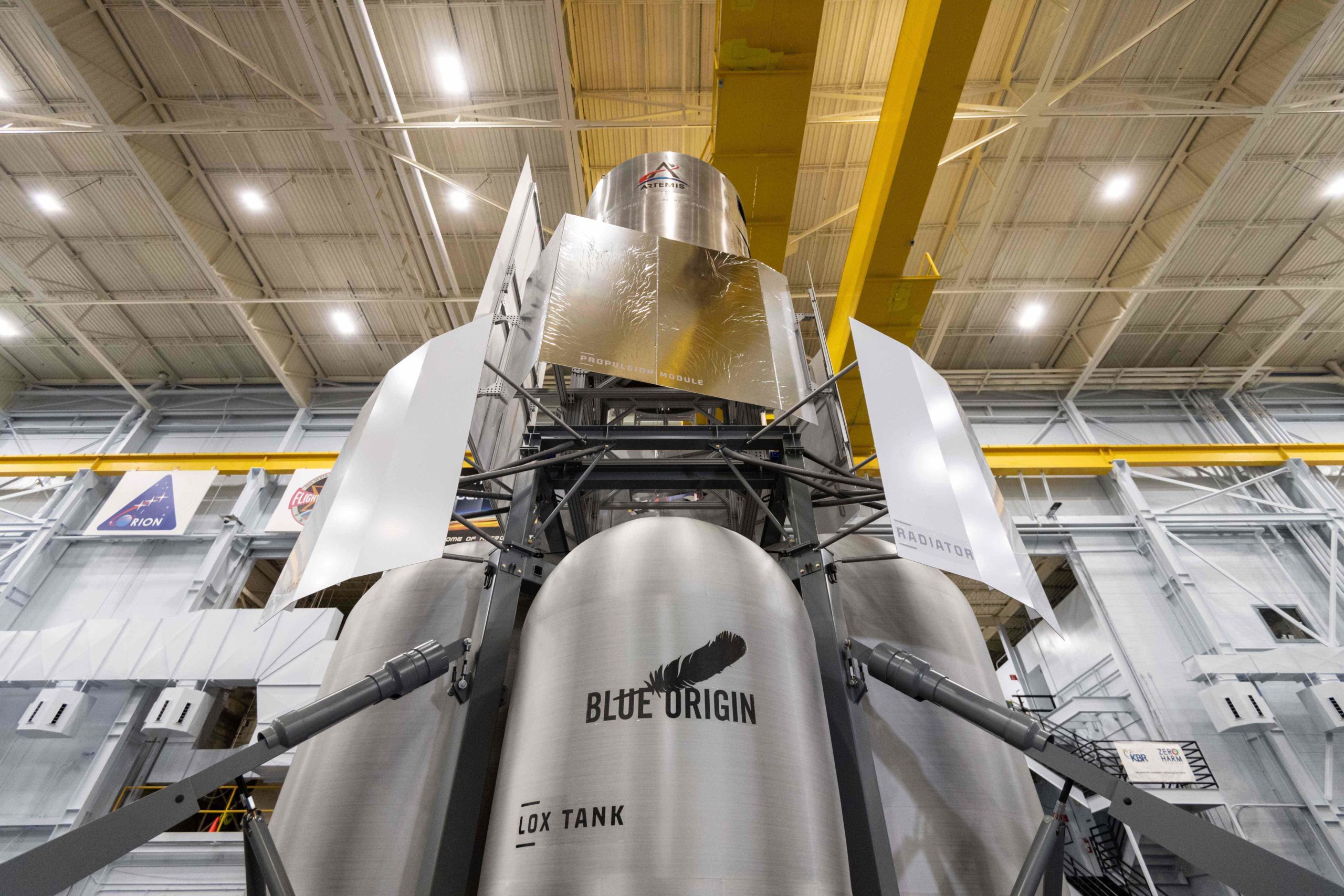
More recently, last August the National Team delivered a full-scale engineering mockup of its HLS, standing 40 feet (12 meters) tall and comprising the integrated Ascent and Descent Elements, to NASA’s Johnson Space Center (JSC) in Houston, Texas, for testing by engineers and astronauts.
And just last September, the Team wrapped up its critical System Requirements Review (SRR), marking the completion of the first “gated” milestone in its bid to build the next human-rated lunar landing vehicle. With the conclusion of the SRR, the Team was authorized to progress onto the NASA Certification Baseline Review (CBR), lower-level-element SRRs and the preliminary design phase.
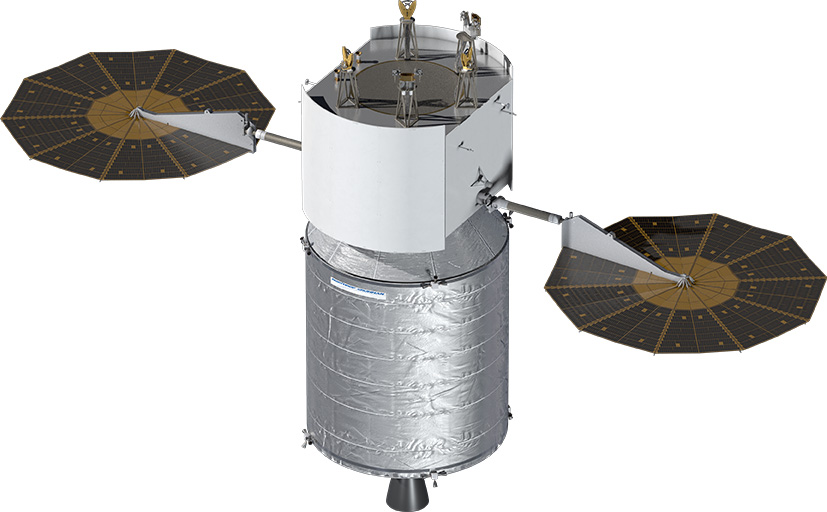
Critical input in the process came from the Blue Moon Science Advisory Board, whose panel included Apollo 17 Lunar Module Pilot (LMP) Harrison “Jack” Schmitt, the second-to-last man to have walked on the Moon. “A complex undertaking like human lunar landings requires paying attention to thousands of details and thinking through every likely contingency,” Dr. Schmitt remarked last summer. “I was very impressed at the depth of engineering and operational sophistication shown in the System Requirements Review. The National Team is working to directly apply the lessons from the Apollo Experience to make America’s next crewed lunar landing successful and the precursor to sustained human activity on the Moon.”
And affording additional inputs at yesterday’s Zoom webinar were Blue Origin National Team Program Manager John Couluris, Lockheed Martin Ascent Element Program Manager Paul Anderson, Lockheed Martin Guidance, Navigation and Control (GNC) lead Charity Duke and Lockheed Martin Human Factors Design Engineer Jevora Hall, together with none other than Moonwalker Charlie Duke, Apollo 13 veteran Fred Haise and seasoned shuttle and ISS flyer Sandy Magnus.
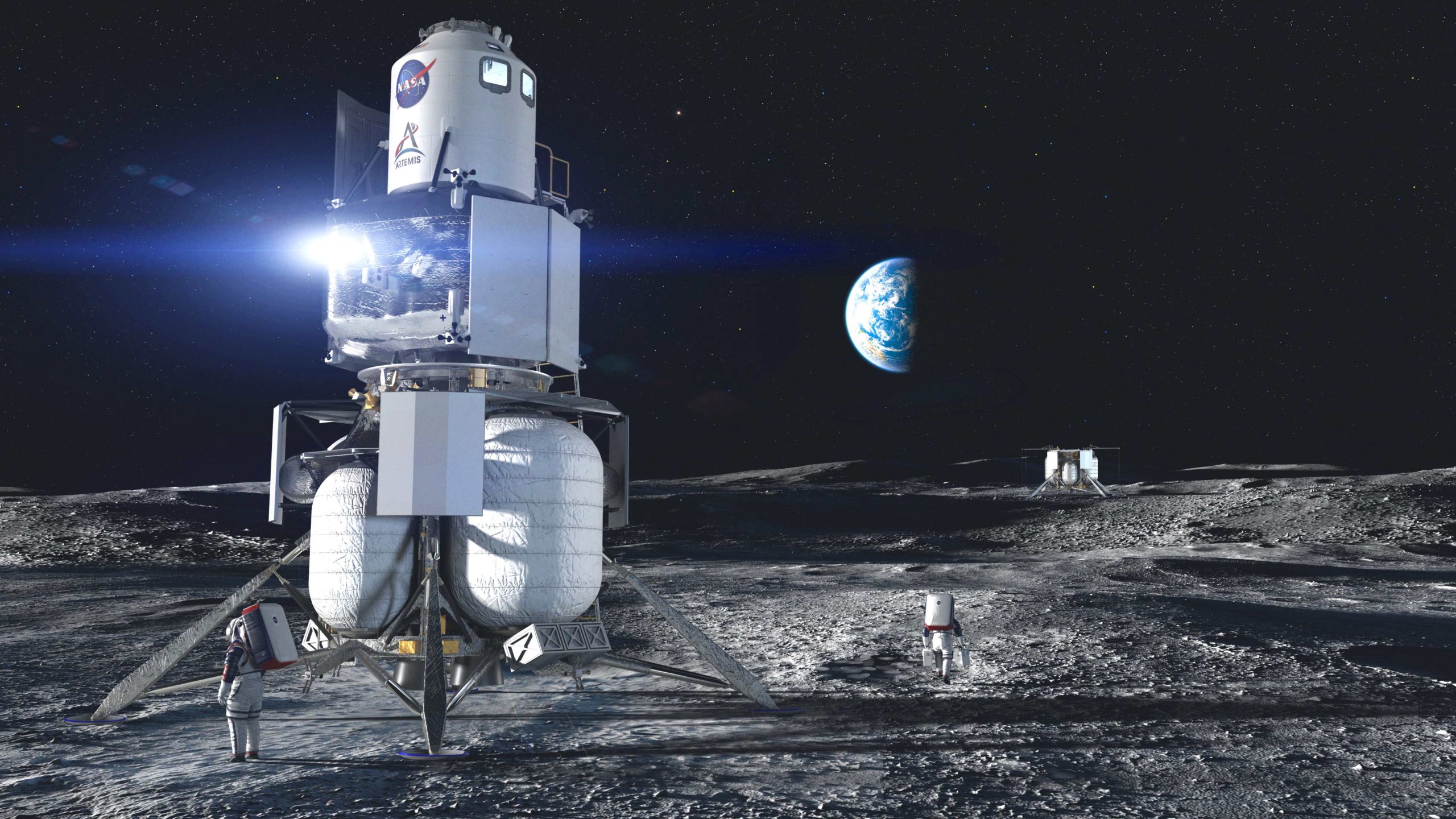
Mr. Couluris opened the proceedings by outlining the current state of affairs, as all three HLS industrial teams press through NASA’s initial ten-month Base Period to mature their processes and technologies, ahead of an anticipated down-select to two providers later this coming spring. He explained that a total of 25 technology maturation efforts have been undertaken in the last several months, featuring astronauts in the loop to better inform the decision-making processes.
Describing the Base Period as “a great collaborative effort”, Mr. Couluris highlighted a No Earlier Than (NET) target of 2023 to land the first Descent Element hardware on the lunar surface to evaluate the performance of Blue Origin’s BE-7 engines, cryogenic systems, landing sensors and associated structures.
A unique perspective on how the Artemis Team will actually live on the Moon was then afforded by Mr. Anderson, who outlined that the Artemis-3 crew—two of whose members will descend to a landing at the lunar south pole—will spend about 6.5 days on the surface and complete five or six sessions of Extravehicular Activity (EVA). He drew viewers’ attention to the sheer size of the National Team’s vehicle, whose 20-foot-tall (6-meter) pressurized Ascent Element, built by Lockheed Martin, features similar avionics, software, life-sustaining systems and crew interfaces as NASA’s Orion spacecraft.
Meanwhile, Blue Origin’s Descent Element will bring the Ascent Element hardware down to the lunar surface using its two BE-7 engines, which possess a “deep-throttle” range with significant controllability benefits. Finally, Northrop Grumman’s Transfer Element—whose design draws heavily upon Cygnus heritage—will provide the requisite hardware to deliver the HLS “stack” from a highly elliptical NRHO to low lunar orbit, ahead of descent and landing operations.
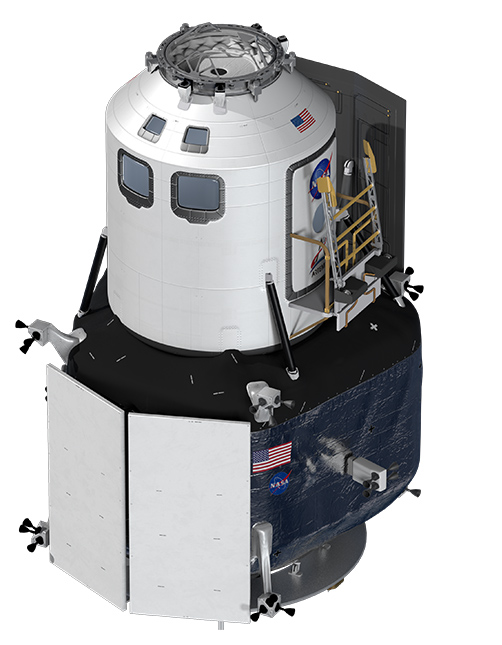
In his summary, Mr. Anderson noted that the Ascent Element is as large as the entire Apollo Lunar Module (LM)—ascent and descent stages combined—and its presence atop the large Descent Element will position it sufficiently high above the ground during landing operations to avoid damage from kicked-up surface debris.
Boasting autonomous systems and described as “a whole different vehicle”, compared to the Apollo-era LM, the Ascent and Descent Elements are both independent spacecraft to provide additional margins for safety, redundancy and reliability. Asked by AmericaSpace about efforts to mitigate the transfer of highly abrasive lunar dust into the Ascent Element cabin, Mr. Anderson told us that filters and an elaborate Environmental Control System (ECS) will assist this gritty task.
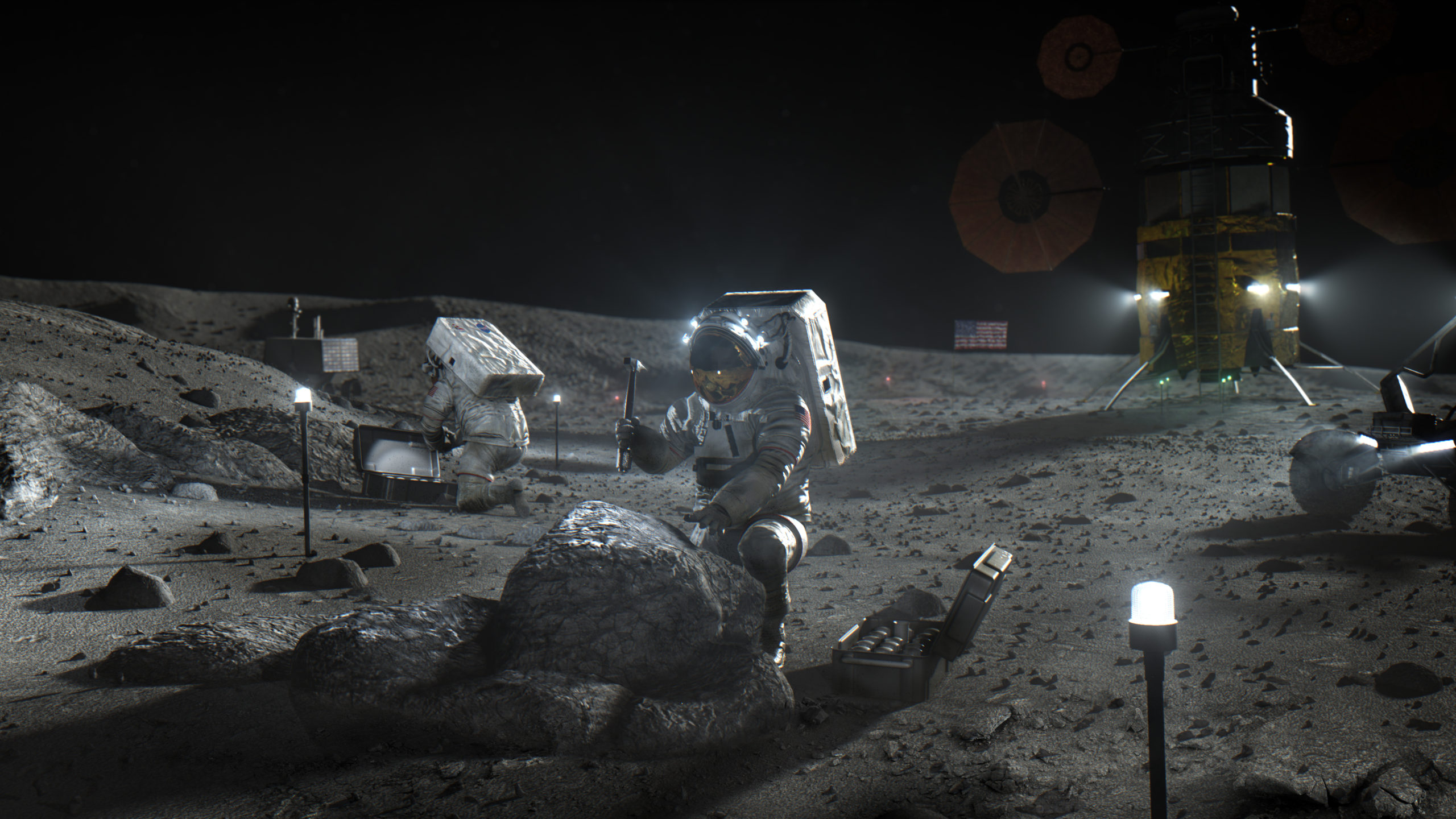
Providing their own input on the new systems, Apollo astronauts Duke and Haise were visibly impressed by the National Team hardware. It represents “an order of magnitude over what we had”, said Mr. Duke, with Apollo 13 veteran Mr. Haise describing it as “about time” a lunar return with humans came once again onto the cards.
He added that the enlarged habitable volume of the Ascent Element (compared to the Apollo LM’s broom-cupboard-sized ascent stage cabin) was a welcome improvement. He also noted that the approximately 30-foot (9-meter) ladder from the Ascent Element down to the surface represented a somewhat longer climb-down than Apollo.
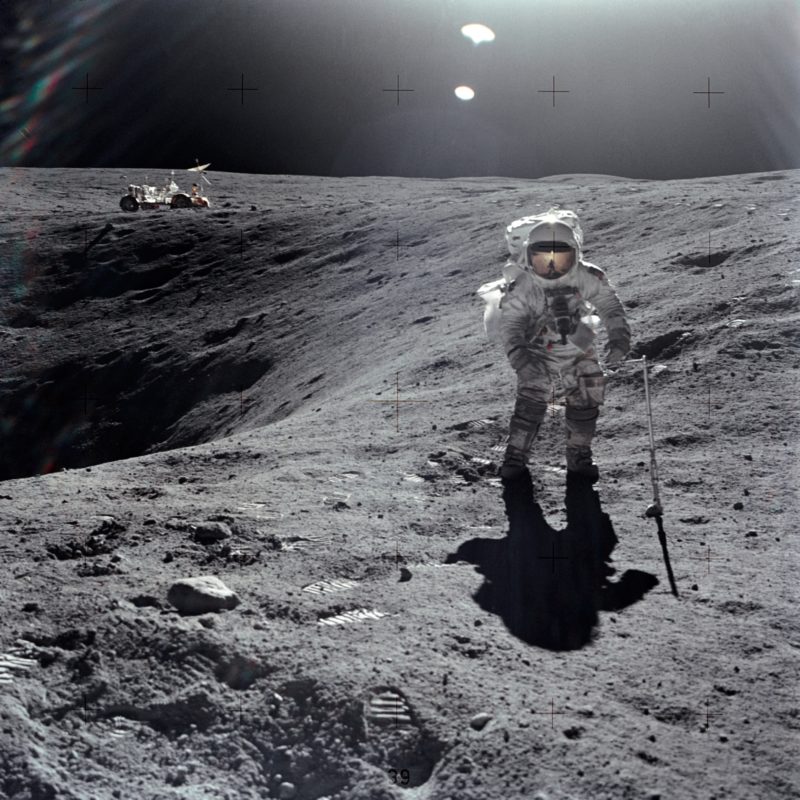
And Charity Duke—although no relation to Charlie Duke—noted that she is the same age today as he was when he landed on the Moon on Apollo 16, way back in April 1972. She asked the Moonwalking veteran for his top tips on what to include in the National Team hardware. Mr. Duke replied that there was no hot-water provision in the Apollo LM, which left himself and Apollo 16 Commander John Young with no opportunity to take hot food or drinks, which resulted in a loss of appetite. In Mr. Duke’s mind, the improved living conditions aboard the National Team’s HLS, together with hot coffee and more personal space, carried particular resonance.
Additional resonance, in Dr. Magnus’ mind, comes from NASA’s pledge that the Artemis Team will include the first female Moonwalkers. In her remarks, the three-flight shuttle and ISS veteran noted that she graduated from high school in 1978, right as the first group of female astronauts were being selected, and that the event made a “huge impression” on her. She stressed the importance of having role models and feels strongly that the promise of Artemis “strikes a resonance into the young women of the world”.




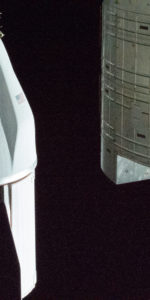

This is very hopeful, I wish you many successes in your lunar missions.
Duban H.